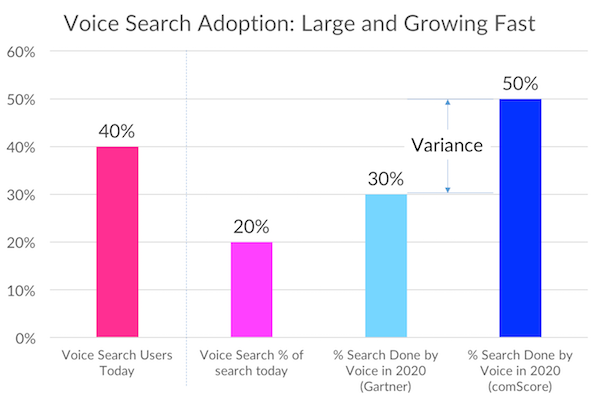Voice SEO and the New Rules of Discovery
Voice interaction has introduced a user experience with far-reaching implications that are still unfolding. Hands free and eyes free access to both requests and content responses is changing the way people access information. The future of content discovery is wrapped up in these changes.
New consumer habits are being formed right now. According to Branded3.com, a Location World presentation cited comScore research reporting that 40% of consumers use voice search daily as of 2016. Gartner says 30% of searches will be done by voice in 2020. comScore says the number is 50% of all searches will be by voice in 2020 according to Campaign. Whether it is one-third or one-half of all searches will soon be done by voice, it is an important trend for marketers. This is especially true because Voice SEO will be very different from the SEO models we have today that are optimized for visual desktop and mobile experiences.
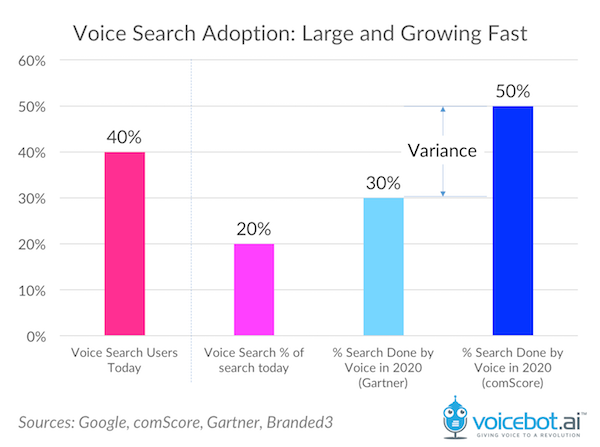
What Started on Mobile is Accelerating Because of Voice Assistants
The trends that started with mobile voice search have accelerated with the introduction of voice assistants on devices ranging from desktops and mobile to smart speakers. Microsoft’s Cortana voice assistant has 145 million monthly active users. Amazon has sold between 13 million and 19 million Echo devices powered by its Alexa voice assistant. And, Echo owners are using them 3-5 times today according to research by Verto Analytics and IFTTT. The IFTTT survey data show 29% of smart speaker owners querying the devices seven or more times daily.
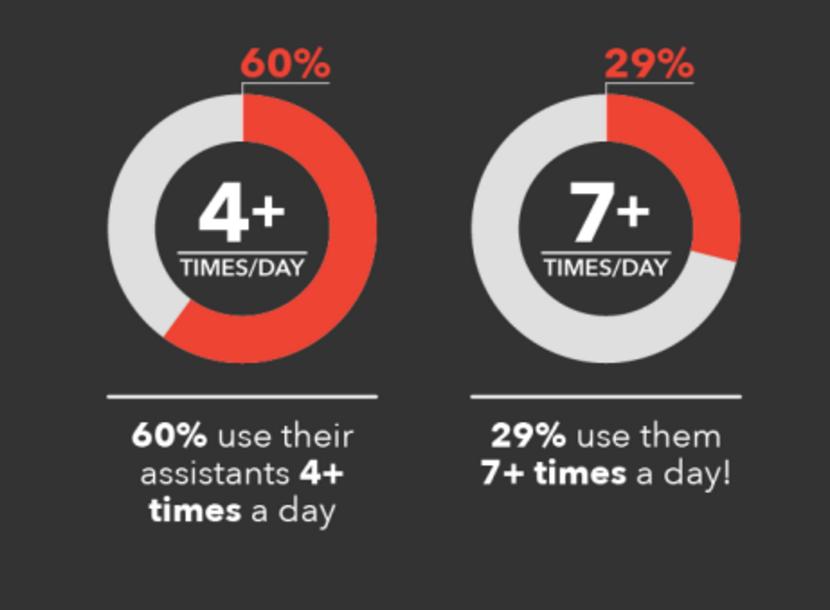
While the voice user experience ramifications are as profound as the introduction of touch-based interfaces on mobile devices ten years ago, the impact on search is potentially existential. This is not to say that traditional search on desktop and mobile will go away in the near term. However, voice-based searches will displace text input and will also usher in new search volume that consumers would have never performed through text input.
Voice Search Algorithms Are Already Changing
The implications of this trend are profound for discoverability. Brands have spent the past 15 years focused on search engine optimization and have tweaked their content to align with Google’s algorithms through their many changes. Voice SEO brings two new elements to consider.
- How will existing text content, audio content and voice applications be prioritized in voice search responses in comparison to web search?
- How will you ensure your content becomes the first, second or third result?
Featured Snippets are an Interim Strategy
Dr. Peter Meyers from SEO tools company Moz has shown us how existing text content will be prioritized in voice search results. He compared 1,000 common search queries that return featured snippets in web browser-based search results. We have all seen these either at the top of search results page or dominating the right-hand side of the screen.
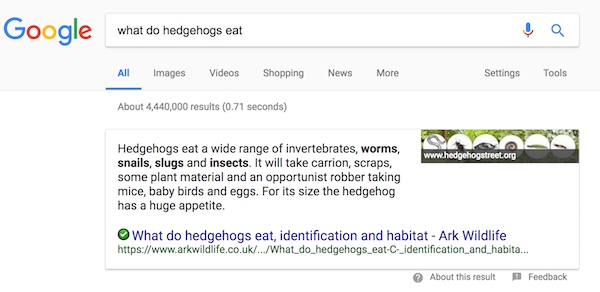
Featured Snippet Example from Google Search
When he executed these same queries through Google Home, 71% of responses from Google Assistant were the featured snippets. If the featured snippet was text-based, it was the answer coming from Google Home 87% of the time. Featured snippets that were lists or tables were returned just under 50% and about 30% respectively. This is likely because many lists and tables do not translate well into spoken recitation.
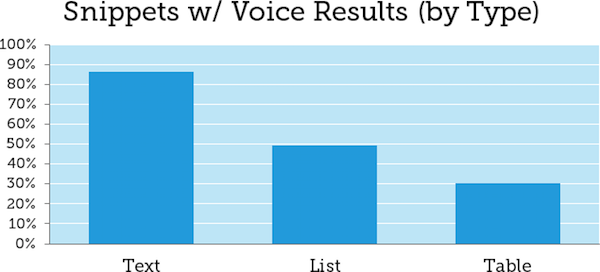
Meyers also found that some responses through Google Assistant that didn’t match to featured snippets appear to come from Google’s knowledge graph. So, snippets are favored over other types of search results and knowledge graph entries are favored over snippets.
The SEO Advantage of Audio Content and Voice Apps
Google is also prioritizing voice applications to voice search queries on Google Assistant and by extension Google Home. There is deep link discovery baked into Google Actions which are the new voice apps for the Google Assistant ecosystem. Google Assistant will proactively suggest voice apps that may be relevant to a particular query based on a scan of these deep links. Amazon’s Alexa does not have this deep-link discovery feature yet, but specific phrases are reserved for Alexa skills. The snippets bias is an intentional application of the old search algorithms and web content to match voice queries. The voice app and audio content bias represents the birth of new search algorithms designed specifically for voice interaction.
This shouldn’t surprise us. Desktop web search algorithms evolved to support the mobile user context. It is even more important that this evolution accelerate for voice. Mobile and desktop are similar modalities because each relies on a combination of text and visual imagery. Voice searches have typically received visual results from Siri and Google as if the user had entered a text search. A long page of links was delivered. The logical response in most instances to voice is an audible response or interactive voice application. That is what Google, Amazon and Microsoft are all moving toward.
The Results Page is Much Shorter
It is clear that marketers will need to start optimizing content for the evolving voice search algorithms. However, the strategy for that optimization will be different than for web search. Ranking for key words and search terms followed a strategy of getting indexed and then using techniques to move up to the first search engine results page (SERP). You could track track your progress from unlisted, to SERP 10 and then to three, two and one. When your content reached that first page, you could then work your way up from the bottom to the top of the page.
Voice search is different. There is only one page and it is short. There are not 10 entries. Often there is only one. Google’s Brad Abrams said on a podcast interview earlier this year that the user experience for voice cannot offer ten search results. He suggested two or maybe three choices at most for search response. If there is no way to see your content’s rank if you are not in the first 1-3 results, how do you know if you are making progress? Can you ever break into the top three?
We all know there is an advantage to being top of the list because it becomes a reinforcing signal to the search engines as users select the options presented and then those options are viewed as more likely to be correct. This means there will be a premium for first-mover advantage on specific search terms. Until the algorithms change from their current design, being first could lead to near permanent voice SERP leadership for specific search terms.
A Brand Imperative for Voice SEO
How will brands be found in a voice-first world? Visual computing interfaces are not disappearing so current strategies for optimizing search discovery must be maintained. However, as more search becomes voice-enabled, brand marketers will need to parallel track voice SEO or literally be silent in the discovery process. Can consumers hear your brand today?
More in Part 2 next week. Sign-up for our weekly newsletter to make sure you don’t miss it. To join the discussion, follow us on Facebook, LinkedIn or request access to Voicebot’s invitation-only Slack Group by emailing info@voicebot.ai.
Voice Search Engine Optimization and the New Rules of Discovery – Part 2


